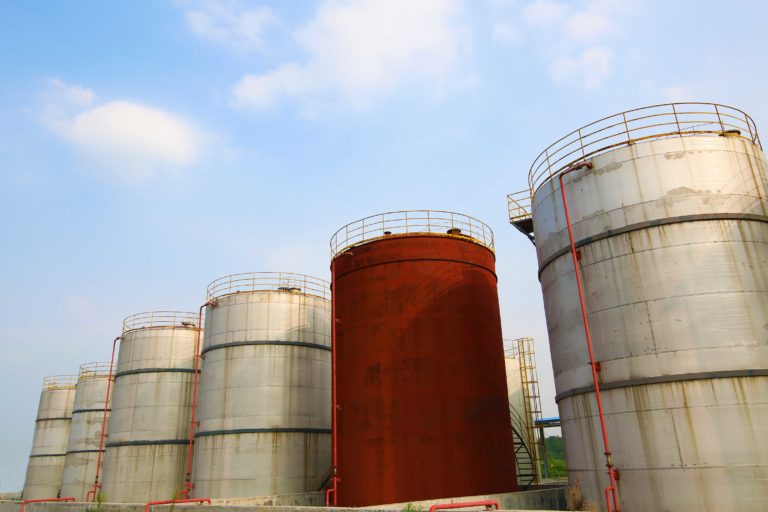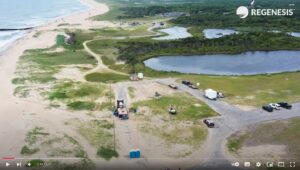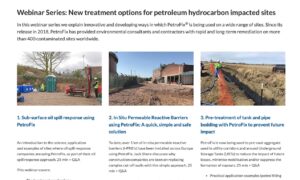In Situ Remediation
of Petroleum Hydrocarbons
Petroleum hydrocarbon (PHC) compounds provide common environmental issues due to the widespread use of fuel and fuel products. Total Petroleum Hydrocarbons (TPH) is a typical measurement of all the petroleum hydrocarbon compounds onsite, which can then be divided into components to understand transport and degradation behavior. Typical PHC contamination encountered in the subsurface include aromatic and aliphatic hydrocarbons, oxygenates, BTEX, polyaromatic hydrocarbons and many more.
REGENESIS offers a range of in situ remediation technologies to target petroleum hydrocarbon contamination in soils and groundwater.
Treatable Contaminants
Petroleum Hydrocarbons in Gasoline Range and Diesel Range, BTEX, MTBE, Creosote and PAHs. For a full overview please see our Range of Treatable Contaminants.
In Situ Remediation Approaches
In Situ Sorption and Biodegradation (ISSB): PetroFix®, PlumeStop®
Enhanced Aerobic Biodegradation (EAB): ORC Advanced®
In Situ Chemical Oxidation (ISCO): RegenOx®, PersulfOx®
Enhancing physical abstraction (Enhanced desorption): RegenOx®
or a combination of these approaches.

Application Methods
Advantages
In situ remediation is sustainable cost-effective and rapidly applied. Once injected, the remediation may be simply observed through groundwater sampling with no ongoing maintenance activities, operational cost or energy use.
3-part Webinar Series
Learn about innovative ways to save project time and cost, reduce risk and prevent future impact
Featured Case Study
Integrated remediation at large EU train depot achieves >99% reduction

 Americas
Americas Europe
Europe Français
Français Deutsch
Deutsch Italiano
Italiano Español
Español



